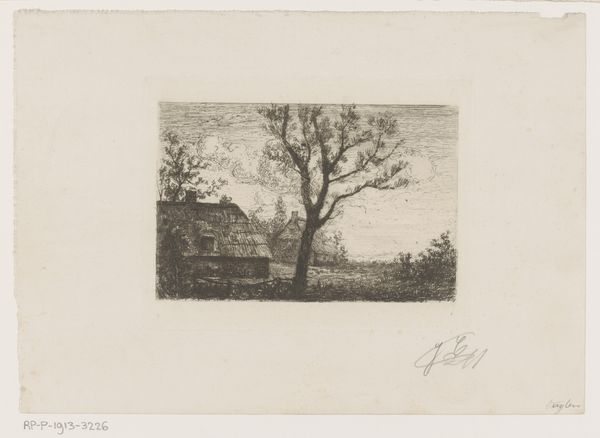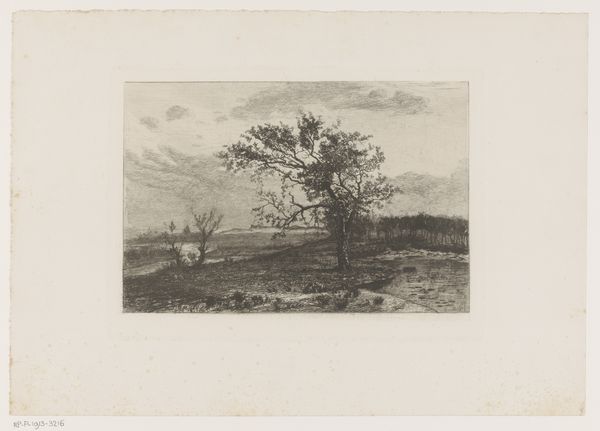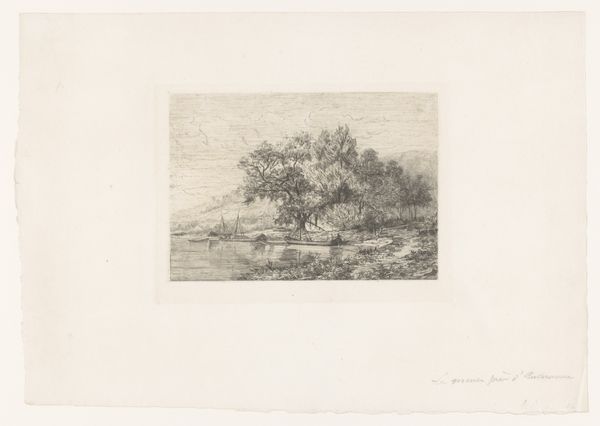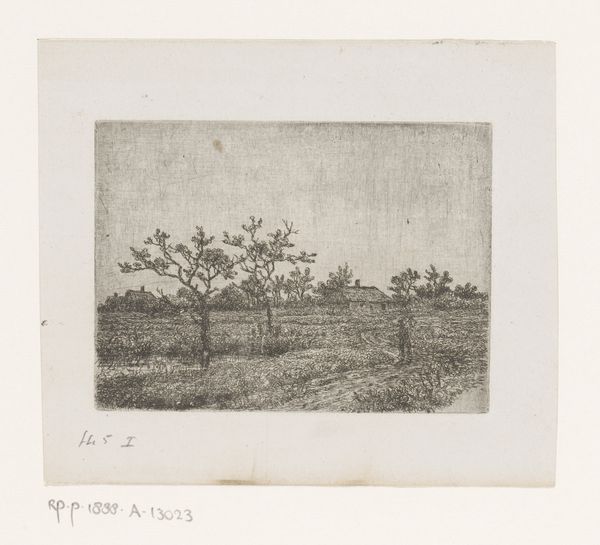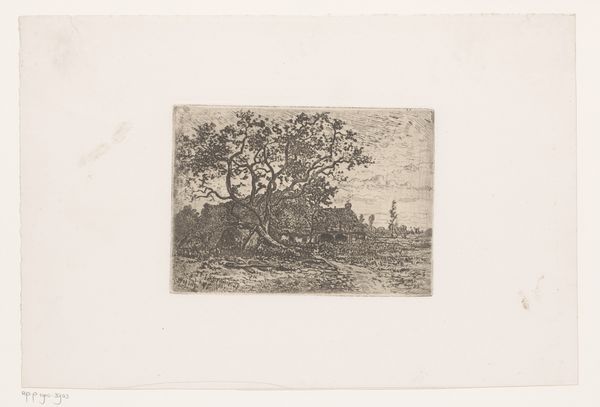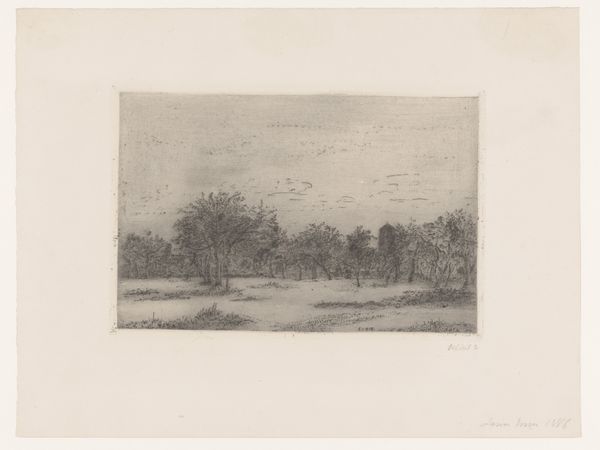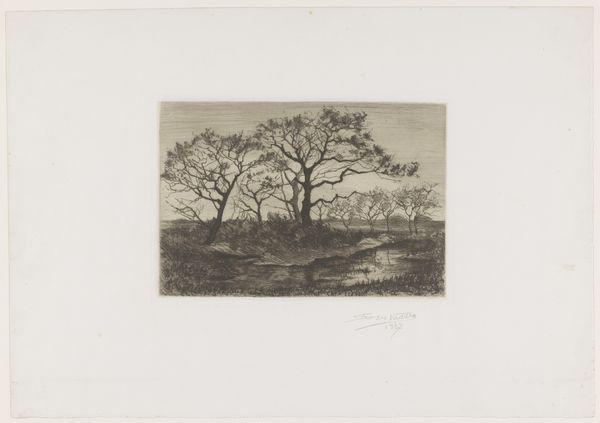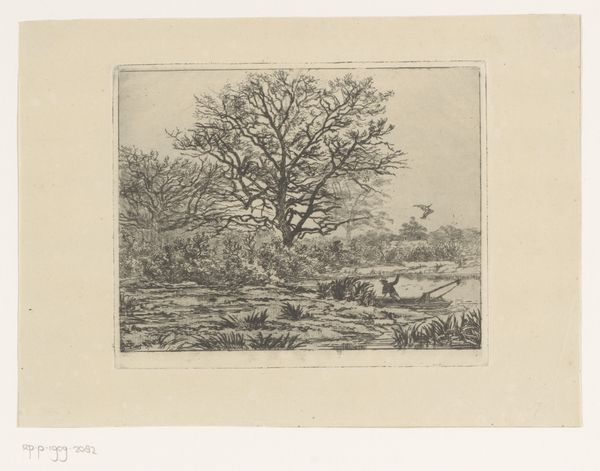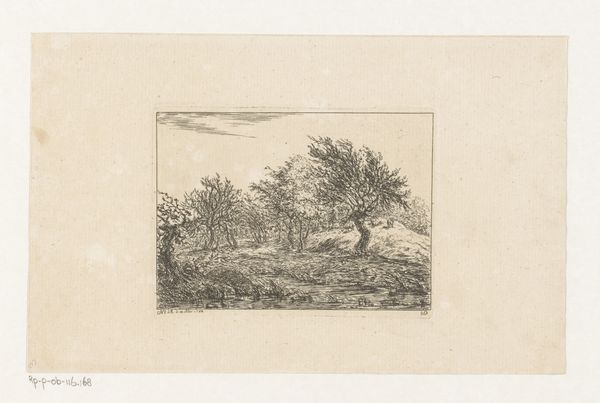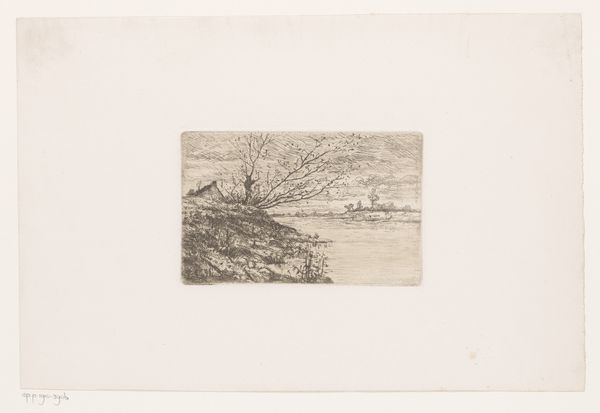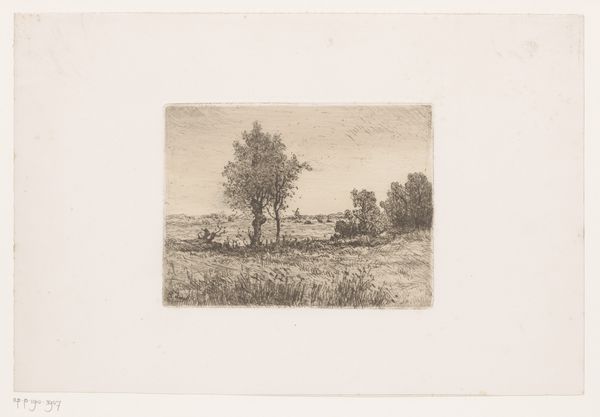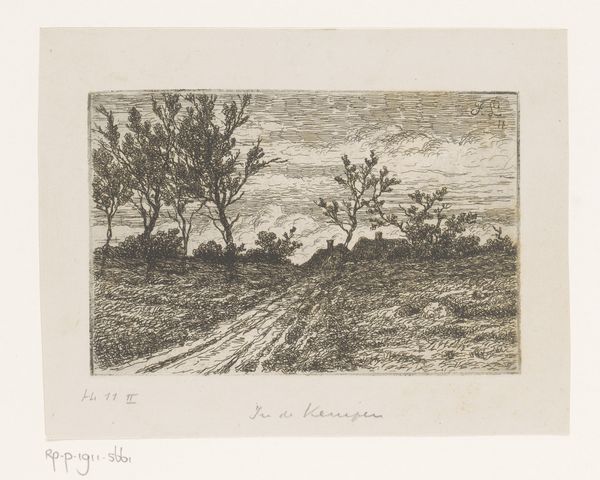
Dimensions: height 82 mm, width 111 mm
Copyright: Rijks Museum: Open Domain
Jean Pierre François Lamorinière created this etching, entitled 'Landscape near Antwerp,' sometime in the 19th century. It depicts a scene of rural life, somewhere outside the growing industrial city. Lamorinière was a painter of the Belgian countryside. At this time, the art world, including the institutions which sustained it, were dominated by figure painting. There was an explicit hierarchy which placed scenes of everyday life, and especially landscape, at the bottom. The hierarchy had a moral dimension: supposedly, ‘history painting’ improved the mind, while landscape was merely pleasing to the eye. Lamorinière bucked this trend. Through attention to naturalistic detail and an almost scientific study of light and shadow, he turned landscape into a respectable genre, paving the way for later artists. By looking at the institutional history of art, we can better understand the social conditions that shaped the artistic production of the time. Such information can be found in exhibition reviews, art criticism, and the records of art academies.
Comments
No comments
Be the first to comment and join the conversation on the ultimate creative platform.
